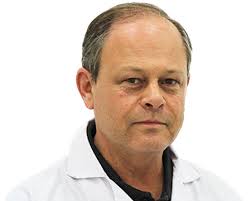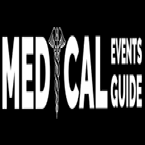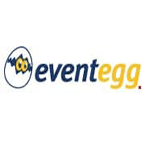Sessions and Tracks
Track 1 : Stem Cell Research and Therapy
Stem cell research and therapy represent one of the most exciting and rapidly advancing fields in modern medicine. Stem cells have the unique ability to develop into many different cell types, making them a powerful tool for understanding human development, treating diseases, and repairing damaged tissues. Derived from early-stage embryos, these cells are pluripotent, meaning they can differentiate into almost any cell type in the body. Found in various tissues, these cells are multipotent and have a more limited ability to differentiate compared to embryonic stem cells. Examples include hematopoietic stem cells (which form blood cells) and mesenchymal stem cells (which can form bone, cartilage, and fat). Created by reprogramming adult cells to revert to a pluripotent state, iPSCs offer a promising alternative to embryonic stem cells without the ethical concerns. Using stem cells to repair or replace damaged tissues and organs, potentially treating conditions such as spinal cord injuries, heart disease, and diabetes. Replacing lost or dysfunctional cells with healthy ones, such as using dopaminergic neurons derived from stem cells to treat Parkinson’s disease. Advancing from preclinical studies to human trials, with ongoing research into treatments for conditions like macular degeneration, spinal cord injuries, and heart failure.
Track 2 : Cancer Biology and Cell Signaling
Cancer Biology and Cell Signaling is a pivotal field of research focused on understanding the complex processes that lead to cancer development, progression, and treatment. This area encompasses the study of genetic, molecular, and cellular mechanisms that drive tumorigenesis and influence the behaviour of cancer cells. Investigating the mutations in oncogenes and tumour suppressor genes that initiate cancer. Exploring modifications in DNA methylation and histone acetylation that affect gene expression without altering the DNA sequence. Studying the role of carcinogens, radiation, and other environmental factors in cancer development. Examining the interaction between cancer cells and the surrounding stromal cells, including fibroblasts and immune cells. Understanding how the ECM influences cancer cell migration, invasion, and metastasis. Investigating the process of new blood vessel formation that supplies nutrients and oxygen to tumours. Characterizing cancer stem cells that have the ability to self-renew and differentiate. Understanding how cancer stem cells contribute to metastasis and tumour recurrence. Developing strategies to specifically target and eliminate cancer stem cells. Studying how growth factors like EGF and VEGF activate their receptors to promote cancer cell proliferation and survival.
Track 3 : Molecular Genetics and Gene Therapy
Molecular Genetics and Gene Therapy is a rapidly advancing field that explores the genetic basis of diseases and develops innovative treatments by directly modifying genes. This area of research holds the potential to cure genetic disorders, improve disease resistance, and enhance overall health through precise genetic interventions. Understanding the organization and function of genes at the molecular level, including the roles of exons, introns, and regulatory elements. Investigating various types of genetic mutations (e.g., point mutations, deletions, insertions) and their effects on gene function and disease. Exploring changes in gene expression that occur without alterations in the DNA sequence, such as DNA methylation and histone modification. Studying patterns of inheritance, including Mendelian and non-Mendelian genetics, to understand how traits and diseases are passed from one generation to the next. Utilizing tools like CRISPR-Cas9, TALENs, and zinc-finger nucleases to precisely edit genes, correct mutations, and study gene function. Developing and optimizing viral vectors (e.g., adenovirus, lentivirus, AAV) for efficient and targeted delivery of therapeutic genes to specific cells and tissues.
Track 4 : Cellular Metabolism and Metabolic Disorders
Cellular Metabolism and Metabolic Disorders delve into the intricate biochemical processes that occur within cells to sustain life, and how dysregulation in these processes can lead to various metabolic diseases. Understanding cellular metabolism is crucial for developing strategies to treat and manage metabolic disorders effectively. Examining pathways such as glycolysis, the citric acid cycle (Krebs cycle), and oxidative phosphorylation that convert nutrients into ATP, the cellular energy currency. Understanding how cells build complex molecules (anabolism) and break down molecules for energy and recycling (catabolism). Investigating the mechanisms that regulate metabolic pathways, including enzyme activity, allosteric regulation, and hormonal control. Exploring glucose metabolism, including glycolysis, gluconeogenesis, and glycogen metabolism, and their role in maintaining blood sugar levels. Investigating the pathways involved in the synthesis and degradation of amino acids, and their roles in protein synthesis and nitrogen balance. Investigating diseases caused by dysfunctional mitochondria, affecting energy production and leading to conditions like Leigh syndrome and mitochondrial myopathy. Developing drugs that target specific metabolic pathways, such as insulin sensitizers, GLP-1 agonists, and statins. Tailoring treatments based on an individual’s metabolic profile and genetic background for more effective management of metabolic diseases.
Track 5 : Cell and Tissue Engineering
Cell and Tissue Engineering is a multidisciplinary field that combines principles of biology, engineering, and materials science to develop biological substitutes that restore, maintain, or improve the function of tissues and organs. This field holds great promise for regenerative medicine, offering potential solutions for repairing damaged tissues and organs, reducing reliance on donor transplants, and advancing personalized medicine. Understanding the behavior of cells in vitro, including stem cell biology, cell differentiation, and cellular signaling. Utilizing pluripotent stem cells (e.g., embryonic stem cells, induced pluripotent stem cells) and multipotent stem cells (e.g., mesenchymal stem cells) for their ability to differentiate into various cell types. Isolating cells directly from tissues, such as chondrocytes, osteoblasts, and hepatocytes, for specific tissue engineering applications. Employing cell lines that can proliferate indefinitely for research and therapeutic purposes. Using materials like collagen, gelatin, chitosan, and alginate that are biocompatible and promote cell interaction. Advancing the development of patient-specific tissues and organs using autologous cells and 3D printing technologies. Creating microfluidic devices that replicate the functions of human organs for drug testing and disease modeling. Integrating CRISPR and other gene-editing technologies to enhance the therapeutic potential of engineered tissues.
Track 6 : Epigenetics and Epigenomics
Epigenetics and Epigenomics are rapidly evolving fields in molecular biology that explore how gene expression is regulated by modifications that do not change the DNA sequence itself but affect how genes are turned on or off. These modifications can be influenced by various environmental factors and can have profound impacts on development, health, and disease. Study of heritable changes in gene expression that do not involve changes to the underlying DNA sequence. Includes DNA methylation, histone modification, chromatin remodeling, and non-coding RNA molecules. Study of the complete set of epigenetic modifications on the genetic material of a cell, known as the epigenome. Utilizes high-throughput sequencing technologies to map epigenetic modifications across the genome. ATP-dependent processes that alter chromatin structure, making DNA more or less accessible to transcription factors and other regulatory proteins. Epigenetic factors contribute to obesity, diabetes, and other metabolic conditions. Techniques like single-cell ATAC-seq and single-cell RNA-seq are providing insights into epigenetic heterogeneity within tissues Using CRISPR technology to precisely modify epigenetic marks and study their functional consequences. Using liquid biopsy techniques to detect circulating epigenetic markers in blood and other body fluids.
Track 7 : CRISPR and Genome Editing Technologies
CRISPR (Clustered Regularly Interspaced Short Palindromic Repeats) and genome editing technologies have revolutionized the field of molecular biology by providing precise tools for modifying genetic material. Originally discovered as part of the bacterial immune system, CRISPR has been adapted into a powerful tool for editing genomes in various organisms, including humans. This technology has numerous applications in basic research, biotechnology, and medicine. Consists of CRISPR arrays and Cas proteins (e.g., Cas9, Cas12a). Allows for targeted editing of specific DNA sequences. The process of making precise changes to the DNA of a cell or organism. Besides CRISPR-Cas, other genome editing tools include TALENs (Transcription Activator-Like Effector Nucleases) and ZFNs (Zinc Finger Nucleases). Directs the Cas9 enzyme to the target DNA sequence. Cas9 creates a double-strand break (DSB) at the target site. Corrects mutations responsible for genetic diseases. Disrupts oncogenes or enhances tumor suppressor genes. Modifies stem cells for transplantation and tissue regeneration.Generates animal organs with human-compatible tissues. Developing more precise genome editing tools to minimize off-target effects. Advancing CRISPR-based therapies for a wide range of genetic disorders.
Track 8 : Molecular and Cellular Immunology
Molecular and Cellular Immunology is a branch of immunology that focuses on the molecular and cellular mechanisms underlying the immune response. It seeks to understand how immune cells interact with each other and with other cells in the body to protect against pathogens and maintain tissue homeostasis. This field is critical for developing new vaccines, understanding autoimmune diseases, and improving cancer immunotherapy. Play a central role in cell-mediated immunity, recognizing and killing infected or abnormal cells. Produce antibodies that neutralize pathogens and mark them for destruction by other immune cells. Engulf and digest pathogens, debris, and dead cells, and also serve as antigen-presenting cells. Antigen-presenting cells that activate T cells and initiate adaptive immune responses. Immune system attacks the body's own tissues, leading to diseases like rheumatoid arthritis and lupus. Immune response to harmless substances, triggering symptoms like sneezing, itching, and swelling. Uses the immune system to target and destroy cancer cells, including checkpoint inhibitors and CAR-T cell therapy. Stimulate the immune system to produce an immune response against specific pathogens, preventing infections. Molecular and Cellular Immunology is a rapidly advancing field that continues to uncover fundamental insights into the immune system, leading to innovative approaches for treating and preventing diseases
Track 9 : Neurobiology and Neurodegenerative Diseases
Neurobiology and Neurodegenerative Diseases are crucial fields that explore the intricate workings of the nervous system, particularly in understanding how the brain and neurons function in health and disease. Neurodegenerative diseases are a group of disorders characterized by the progressive degeneration of the structure and function of the nervous system, leading to problems with movement (such as Parkinson's disease), cognition (such as Alzheimer's disease), or both. Basic building blocks of the nervous system, responsible for transmitting electrical and chemical signals. Chemical messengers that transmit signals across synapses, the junctions between neurons. Largest part of the brain, responsible for higher brain functions such as thought and action. The brain's ability to reorganize itself by forming new neural connections, crucial for learning and memory. Characterized by memory loss, cognitive decline, and changes in behavior. Involves tremors, stiffness, and difficulty with balance and coordination. Causes involuntary movements, cognitive decline, and behavioural changes. Affects nerve cells controlling voluntary muscles, leading to muscle weakness and paralysis.
Track 10 : Proteomics and Protein Engineering
Proteomics and Protein Engineering are key areas of research in molecular biology and biotechnology, focusing on the study and manipulation of proteins, which are essential molecules for the structure, function, and regulation of cells and organisms. The large-scale study of proteins, including their structures, functions, interactions, and modifications within a biological system. The linear sequence of amino acids in a protein. Regular, repeated patterns in the protein chain, such as alpha helices and beta sheets. The overall three-dimensional shape of a protein, crucial for its function. The arrangement of multiple protein subunits in a larger protein complex. The process by which information from a gene is used to synthesize a functional protein. Chemical modifications to proteins after they are synthesized, affecting their structure and function. The physical contacts between proteins that occur in a cell. Managing and interpreting large-scale proteomics data sets. Studying protein expression at the level of individual cells. Understanding protein structures at a high resolution to inform drug design and protein engineering efforts.Proteomics and Protein Engineering are dynamic fields that continue to advance our understanding of biological systems and drive innovation in medicine, biotechnology, and beyond
Track 11 : Single-Cell Analysis and Applications
Single-cell analysis is a powerful approach that allows researchers to study the behavior, function, and heterogeneity of individual cells within a population. This technique has revolutionized our understanding of complex biological systems and has numerous applications in various fields, including developmental biology, cancer research, immunology, and neuroscience. Single-cell analysis involves the isolation, manipulation, and analysis of individual cells to uncover cellular diversity, dynamics, and interactions within a population. Several techniques are used for single-cell analysis, including single-cell RNA sequencing (scRNA-seq), single-cell proteomics, single-cell genomics, and single-cell imaging. Single-cell analysis helps to understand cell differentiation, lineage commitment, and cell fate determination during development. It enables the study of intratumoral heterogeneity, tumor evolution, and the identification of rare cancer stem cells. Single-cell analysis allows the characterization of immune cell subsets, their activation states, and their responses to stimuli. It helps in studying neuronal diversity, synaptic plasticity, and neural circuitry at the single-cell level. Single-cell analysis aids in identifying and characterizing stem cell populations and their differentiation potential. Reveals cellular heterogeneity and rare cell populations that are masked in bulk analyses.
Track 12 : Developmental Biology and Regenerative Medicine
Developmental biology and regenerative medicine are closely related fields that focus on understanding the processes of growth, development, and repair in organisms. While developmental biology studies how organisms grow and develop from a single cell into a complex multicellular organism, regenerative medicine explores ways to repair, replace, or regenerate damaged tissues and organs. Developmental biology is the study of how organisms grow and develop. It examines the processes by which a single fertilized egg gives rise to the diverse cell types and tissues that make up a fully formed organism. This field seeks to understand the molecular and cellular mechanisms that control development, including cell differentiation, tissue patterning, and organ formation. Regenerative medicine is a branch of medicine that aims to restore or enhance the body's natural healing ability. It involves the use of stem cells, tissue engineering, and other approaches to repair, replace, or regenerate damaged tissues and organs. Regenerative medicine has the potential to revolutionize medical treatment by offering new therapies for a wide range of conditions, including injuries, genetic disorders, and degenerative diseases. Stem cells are a key focus of both developmental biology and regenerative medicine. These are undifferentiated cells that have the ability to differentiate into specialized cell types. During development, stem cells give rise to the various cell types and tissues of the body. In regenerative medicine, stem cells are being investigated as a potential source of cells for repairing damaged tissues and organs.
Track 13 : Microbiome and Host Interactions
Microbiome and host interactions refer to the dynamic relationship between the microorganisms that inhabit the human body (microbiome) and the host (human) itself. This complex interaction plays a crucial role in maintaining health and influencing various physiological processes. The human body is home to trillions of microorganisms, including bacteria, viruses, fungi, and archaea, collectively known as the microbiome. These microorganisms colonize various parts of the body, such as the skin, gut, oral cavity, and reproductive organs. The microbiome and the host engage in a constant dialogue through various mechanisms. The microbiome communicates with the host through the production of metabolites, such as short-chain fatty acids, neurotransmitters, and vitamins. In turn, the host provides nutrients and an environment for the microbiome to thrive. The microbiome plays a crucial role in maintaining health and preventing disease. It helps digest food, produce essential nutrients, and modulate the immune system. Alterations in the microbiome composition, known as dysbiosis, have been linked to various health conditions, including obesity, inflammatory bowel disease, and mental health disorders. The microbiome plays a key role in regulating the immune system. It helps educate the immune system, distinguishing between harmful pathogens and beneficial microbes. Dysregulation of this immune-microbiome crosstalk can lead to immune-related disorders.. Research has shown that alterations in the microbiome composition are associated with several diseases. For example, changes in the gut microbiome have been linked to inflammatory bowel disease, while alterations in the skin microbiome are associated with conditions such as acne and eczema.
Track 14 : Synthetic Biology and Bioengineering
Synthetic biology is an interdisciplinary branch of biology and engineering that combines principles from biology, engineering, and computer science to design and construct new biological parts, devices, and systems, as well as to redesign existing biological systems for useful purposes. Synthetic biology aims to apply engineering principles to biology, treating cells as programmable machines. Researchers design biological parts, circuits, and systems to perform specific functions, similar to designing electronic circuits. Synthetic biology has a wide range of applications, including the production of biofuels, pharmaceuticals, and chemicals; environmental remediation; agriculture; and healthcare. It also holds promise for creating novel materials and biosensors. Advances in genome editing technologies, such as CRISPR-Cas9, have revolutionized synthetic biology by enabling precise modification of DNA sequences in living organisms. This has opened up new possibilities for creating custom-designed organisms with desired traits. To facilitate the design and construction of biological systems, synthetic biologists have developed standard biological parts and devices that can be used interchangeably in different systems. This standardization helps in the modular construction of complex biological systems. The field of synthetic biology raises important ethical and safety concerns, including the potential for bioterrorism, accidental release of engineered organisms, and unforeseen environmental impacts. Researchers and policymakers are working to address these concerns through guidelines and regulations.
Track 15 : Structural Biology and Molecular Dynamics
Structural biology is a branch of molecular biology, biochemistry, and biophysics that focuses on the study of the structure and function of biological macromolecules, such as proteins, nucleic acids, and carbohydrates, and their interactions. Molecular dynamics is a computational technique used to simulate the movement of atoms and molecules over time, providing insights into the dynamics and behavior of biological molecules at the atomic level. Structural biology employs a variety of experimental techniques to determine the three-dimensional structures of biological molecules, including X-ray crystallography, nuclear magnetic resonance (NMR) spectroscopy, and cryo-electron microscopy (cryo-EM). The three-dimensional structure of a protein is crucial for understanding its function. Structural biologists study how proteins fold into specific shapes, how they interact with other molecules, and how these interactions regulate biological processes. Structural biology plays a key role in drug discovery and development. By determining the structure of a target protein, researchers can design molecules that bind to the protein and modulate its function, leading to the development of new therapeutics. Molecular dynamics simulations use physical principles to model the behavior of atoms and molecules over time. These simulations provide insights into the dynamics of biomolecular systems, such as protein folding, enzyme catalysis, and ligand binding.
Track 16 : Cell Cycle and Cell Division
The cell cycle is a highly regulated process that controls the growth and division of cells. It consists of several distinct phases, including interphase (G1, S, and G2 phases) and mitosis (prophase, metaphase, anaphase, and telophase), each of which is characterized by specific events and activities. Cell division, or https://cellscience.conferenceseries.com/cytokinesis, occurs at the end of the cell cycle and results in the formation of two daughter cells from a single parent cell. The cell prepares for division by growing in size (G1 phase), replicating its DNA (S phase), and continuing to grow and prepare for division (G2 phase). Chromatin condenses into chromosomes, the nuclear envelope breaks down, and the mitotic spindle forms. Chromosomes align at the metaphase plate, a plane equidistant from the two spindle poles. Sister chromatids separate and move toward opposite spindle polesThe cell cycle is regulated by a complex network of regulatory proteins, including cyclins and cyclin-dependent kinases (CDKs), which control the progression through each phase of the cycle. Dysregulation of the cell cycle can lead to uncontrolled cell division and is associated with various diseases, including cancer. Understanding the cell cycle and cell division is crucial for understanding basic biological processes, such as growth and development, as well as for developing treatments for diseases such as cancer, where cell cycle regulation is disrupted.
Track 17 : Cell Migration and Invasion
Cell migration and invasion are fundamental processes in the development and maintenance of multicellular organisms. They are also critical for various physiological processes, including immune responses, wound healing, and tissue regeneration. However, these processes can also play a role in pathological conditions such as cancer metastasis. Cell migration refers to the movement of cells from one location to another. This movement is essential for processes such as embryonic development, immune responses, and tissue repair. Cell migration involves a complex interplay of molecular mechanisms, including changes in cell shape, adhesion to substrates, cytoskeletal rearrangements, and signalling pathways that regulate these processes. Cell invasion, on the other hand, refers to the ability of cells to invade surrounding tissues or to migrate through barriers such as basement membranes. Invasion is a crucial step in cancer metastasis, where cancer cells spread from the primary tumor to other parts of the body. Invasion requires cells to degrade the extracellular matrix and to acquire the ability to migrate through tissues.
Track 18 : Bioinformatics and Systems Biology
Bioinformatics and systems biology are interdisciplinary fields that focus on the analysis and interpretation of biological data, particularly at the molecular level. Bioinformatics involves the development and application of computational tools and methods for analyzing and interpreting biological data, such as DNA sequences, protein structures, and gene expression profiles. Systems biology, on the other hand, aims to understand biological systems as a whole, considering the interactions and relationships between their components.Bioinformatics plays a crucial role in modern biological research by providing tools for managing, analyzing, and interpreting large-scale biological data sets. This includes genomic data, such as DNA sequences and gene expression profiles, as well as proteomic and metabolomics data. Bioinformatics tools are used to identify genes, predict protein structures and functions, and analyze biological pathways and networks.Systems biology takes a holistic approach to understanding biological systems by integrating data from multiple sources and levels of organization. This includes molecular interactions, cellular processes, and organismal behavior. Systems biologists use computational models and simulations to study how biological systems function and respond to changes in their environment.
Track 19 : Cellular Mechanotransduction
Cellular mechanotransduction is the process by which cells sense and respond to mechanical forces in their environment. This process is crucial for various cellular functions, including cell growth, differentiation, migration, and tissue development. Mechanotransduction involves the conversion of mechanical stimuli into biochemical signals that regulate cellular behavior.At the molecular level, mechanotransduction involves several key components. These include mechanosensors, which are proteins or protein complexes that detect mechanical forces, and signaling pathways that transmit the mechanical signals into the cell. Mechanosensors can be located on the cell membrane, in the cytoskeleton, or within the cell nucleus.One example of cellular mechanotransduction is the response of bone cells to mechanical loading. Osteocytes, which are the most abundant cells in bone tissue, can sense mechanical forces exerted on the bone and respond by secreting signaling molecules that regulate bone remodeling. This process helps to maintain bone density and strength in response to mechanical stress.
Track 20 : Molecular Pathology and Diagnostics
Molecular pathology and diagnostics refer to the study and analysis of disease at the molecular level to understand the underlying mechanisms and develop diagnostic tools and treatments. It involves the use of molecular biology techniques to examine biomarkers, genetic mutations, and other molecular changes associated with disease.In molecular pathology, researchers and clinicians study how genes and proteins are altered in disease states. This includes identifying mutations, deletions, and other changes in the DNA or RNA of cells. By understanding these molecular changes, researchers can develop molecular tests to diagnose diseases more accurately and guide treatment decisions.Molecular diagnostics is the application of molecular biology techniques to diagnose disease. This can include the use of polymerase chain reaction (PCR) to detect the presence of specific DNA or RNA sequences associated with disease, or the use of next-generation sequencing (NGS) to analyze the entire genome or transcriptome of a patient. These tests can provide more precise and personalized information about a patient's disease, leading to more targeted and effective treatments.
Track 21 : Nanotechnology in Cell Biology
Nanotechnology has revolutionized cell biology by providing tools and techniques to study cells at the nanoscale, leading to a deeper understanding of cellular processes and enabling new applications in diagnostics and therapeutics. Nanoparticles, such as quantum dots, gold nanoparticles, and magnetic nanoparticles, are used as contrast agents for high-resolution imaging of cells and subcellular structures. They offer advantages such as increased sensitivity and multiplexing capabilities. Nanoparticles are used to deliver drugs, genes, or other therapeutic molecules into cells with high specificity and efficiency. They can protect the cargo from degradation and control its release, leading to improved therapeutic outcomes. Nanotechnology enables the development of nanoscale scaffolds and substrates for cell culture, mimicking the natural cell environment. These platforms can provide cues for cell adhesion, proliferation, and differentiation, making them valuable for tissue engineering and regenerative medicine. Nanotechnology tools, such as nanoscale sensors and probes, enable the analysis of individual cells in a population. This allows for the study of cellular heterogeneity and rare cell populations, which is critical for understanding complex biological processes and disease mechanisms. echniques like optogenetics, which use light-sensitive nanoparticles to control cellular activity, and nanoscale actuators for mechanical manipulation of cells, offer new ways to study and manipulate cellular functions.
Track 22 : Translational Cell Biology and Therapeutics
Translational cell biology bridges the gap between basic cellular research and clinical applications, aiming to translate scientific discoveries into therapeutic strategies. It involves studying the fundamental mechanisms of cellular processes and applying this knowledge to develop novel therapies for various diseases. Translational cell biology focuses on understanding the cellular and molecular mechanisms underlying disease development and progression. By elucidating these mechanisms, researchers can identify new therapeutic targets and develop targeted therapies. ranslational cell biology plays a crucial role in drug discovery by identifying and validating new drug targets. By studying how drugs interact with cellular components, researchers can design more effective and safer drugs for clinical use. Stem cells have the potential to differentiate into various cell types and tissues, making them promising candidates for regenerative medicine. Translational cell biology research aims to harness the regenerative potential of stem cells to develop therapies for conditions such as heart disease, diabetes, and neurodegenerative disorders. Cell-based therapies involve using living cells as therapeutic agents. Translational cell biology research focuses on developing and optimizing these therapies, such as CAR-T cell therapy for cancer or cell-based treatments for genetic disorders.
Track 23 : Cellular Responses to DNA Damage and Repair
Cellular responses to DNA damage and repair are critical for maintaining genomic integrity and preventing the accumulation of mutations that can lead to cancer and other diseases. When DNA is damaged, cells activate a complex network of signaling pathways collectively known as the DNA damage response (DDR). The DDR coordinates various cellular processes, including DNA repair, cell cycle arrest, and, in some cases, programmed cell death (apoptosis), to ensure that damaged DNA is repaired correctly or, if repair is not possible, that the damaged cell is eliminated.There are several types of DNA damage, including single-strand breaks, double-strand breaks, and chemical modifications to the DNA bases. Each type of damage can trigger specific repair pathways, such as base excision repair (BER), nucleotide excision repair (NER), and homologous recombination (HR) or non-homologous end joining (NHEJ) for double-strand breaks.The cellular response to DNA damage is tightly regulated and involves the activation of various proteins, including sensors that detect DNA damage, transducers that relay signals, and effectors that carry out the repair process. These proteins work together in a coordinated manner to ensure that damaged DNA is repaired efficiently and that cells with irreparable damage are eliminated to prevent the accumulation of mutations
Track 24 : Advanced Imaging Techniques in Cell Biology
Advanced imaging techniques have revolutionized the field of cell biology by allowing researchers to visualize cellular structures and processes with unprecedented detail and clarity. These techniques provide insights into the organization, dynamics, and function of cells, helping researchers better understand fundamental biological processes and diseases.One of the most widely used advanced imaging techniques in cell biology is confocal microscopy, which uses a laser to scan a specimen and create a detailed, three-dimensional image. Confocal microscopy allows researchers to study the spatial organization of cells and tissues, as well as dynamic processes such as cell division and intracellular trafficking.Another powerful imaging technique is super-resolution microscopy, which overcomes the diffraction limit of light to achieve resolutions below the wavelength of light. Super-resolution microscopy techniques such as structured illumination microscopy (SIM) and stochastic optical reconstruction microscopy (STORM) allow researchers to visualize structures within cells, such as individual molecules and cellular organelles, with unprecedented detail.In addition to microscopy-based techniques, advanced imaging techniques in cell biology include live-cell imaging, which allows researchers to observe cellular processes in real-time, and electron microscopy, which provides high-resolution images of cellular ultrastructure. These techniques, along with others such as single-molecule imaging and correlative light and electron microscopy (CLEM), are helping researchers uncover the complexity of cellular processes and how they are perturbed in disease states.



























